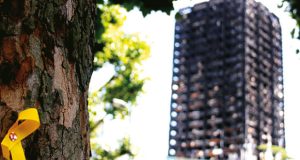
The groups of workers who may be at increased risk include new and expectant mothers, young people and children, disabled people and those with long-term medical conditions, new and less experienced workers, migrant workers or those for whom English is not their first language, those returning after prolonged illness, new starters, temporary workers, lone workers and home workers.
COVID-19
Supporting workers in higher risk groups
The Public Health England report Disparities in the Risk and Outcomes of COVID-19 shows that some groups of people may be at more risk of being infected and/or suffer an adverse outcome if infected.
The higher-risk groups include those who:
- Are older males
- Have a high body mass index (BMI)
- Have health conditions such as diabetes
- Are from some Black, Asian or minority ethnicity (BAME) backgrounds
SHIELDED WORKERS
During the COVID-19 outbreak the government have defined some people as clinically extremely vulnerable (shielded). These shielded workers are at an increased risk of severe illness from Coronavirus. They are not allowed to return to their workplaces before:
England 01 August 2020 guidance Public Health England
Scotland 01 August 2020 guidance Health Protection Scotland
Wales 16 August 2020 guidance Public Health Wales.
KEY POINTS
- General risk assessments for premises and work activities and fire risk assessments, must take into account the risks to all who may be affected, highlighting any more vulnerable groups of workers.
- In the case of young workers (below the age of 18) and new and expectant mothers, specific risk assessments must be undertaken.
- Personal emergency evacuation plans (PEEPs) must be devised to ensure that disabled workers can safely escape in the event of fire or other emergencies.
- Safe systems of work need to take into account the special needs of vulnerable workers, e.g. additional training, enhanced supervision, altered working patterns, translation of written instructions, extra supervision.
- Health and safety takes priority. If reasonable adjustments cannot be made to accommodate a worker’s particular needs, then managers should seek HR advice. In the case of new and expectant mothers there is a legal requirement to suspend the worker on full pay if the work/workplace cannot be made safe.
- For workers below the age of 18, and in particular, for those who are still children, there are legal restrictions on the type of work permitted and more stringent working time legislation which must be complied with.
VULNERABLE WORKERS
Recommendations for employers
- Assess workers capabilities after recruitment, or after a prolonged period of ill health and before the worker begins work
- Do not employ children or young people for work which is not permitted, or without a relevant permit, parental consent in the case of a child
- Comply with specific requirements on working hours, breaks, night work and rest as apply to the particular age of the worker
- When undertaking risk assessments, ensure that groups of vulnerable workers are identified and that risk control measures take them into account
- Carry out any additional specific risk assessments
as required by legislation and good practice, e.g. young workers, new and expectant mothers, disabled workers - Involve workers in the risk assessment process, as a minimum by sharing the key findings. For child workers, share the findings with the parent or guardian
- Make sure that first aid and fire and other emergency procedures take into account any specific needs
- Where work equipment is involved, consider any ergonomic changes needed
- Make other reasonable adjustments to work activities and workplaces as needed – this can include working hours and pay
- Take into account any special needs and language barriers within training programmes including the provision of a suitable induction programme
- Considering any special needs when communicating health and safety messages
Provide additional support and supervision where needed
- Liaise with employment agencies to ensure that they play their part in the safety of temporary workers they supply
- Where it is not possible to make the work safe for a worker through reasonable efforts and costs, seek HR or health and safety advice, as applicable.
Visit https://barbour-ehs.com to register
The general H&S duties for the management of vulnerable workers are contained within:
- Equality Act 2010
- Fire Safety (Scotland) Regulations 2006
- Fire Safety Regulations (Northern Ireland) 2010
- Health and Safety at Work etc. Act 1974
- Management of Health and Safety at Work Regulations 1999
- Regulatory Reform (Fire Safety) Order 2005
- Working Time Regulations 1998





